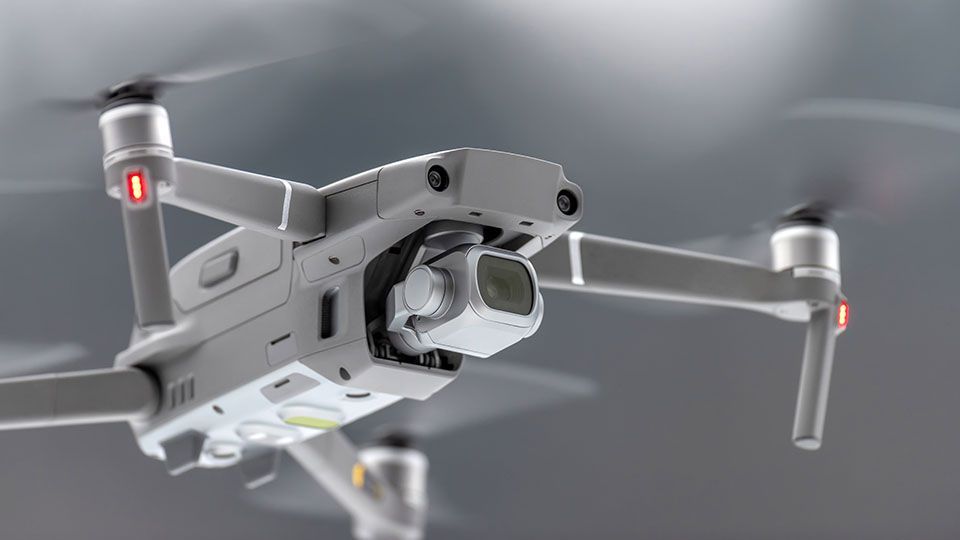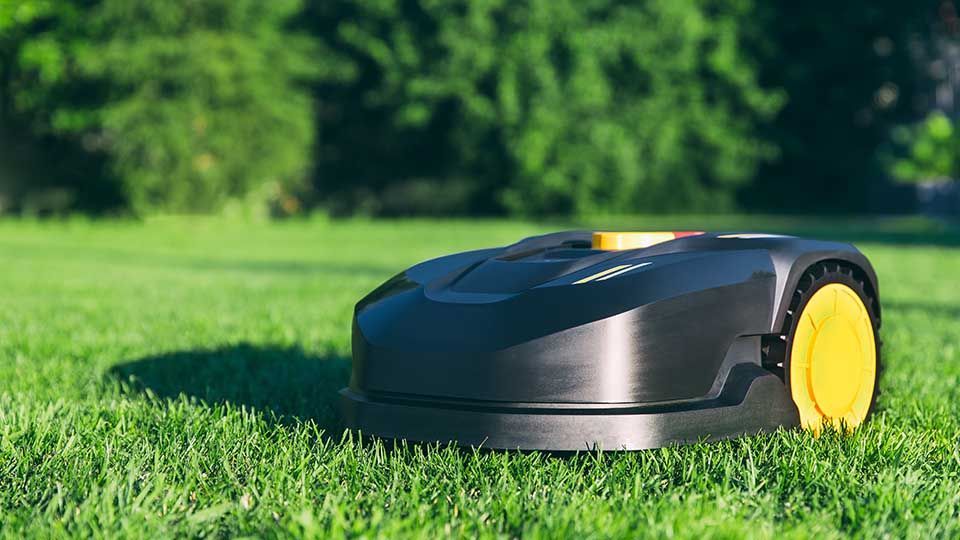Best Home 3D Printers
Find the best in-home 3D printers!
Last Updated: February 11, 2023
Best Home 3D Printers Under $500.00
The best home 3D printers, all with price tags under $500.00!
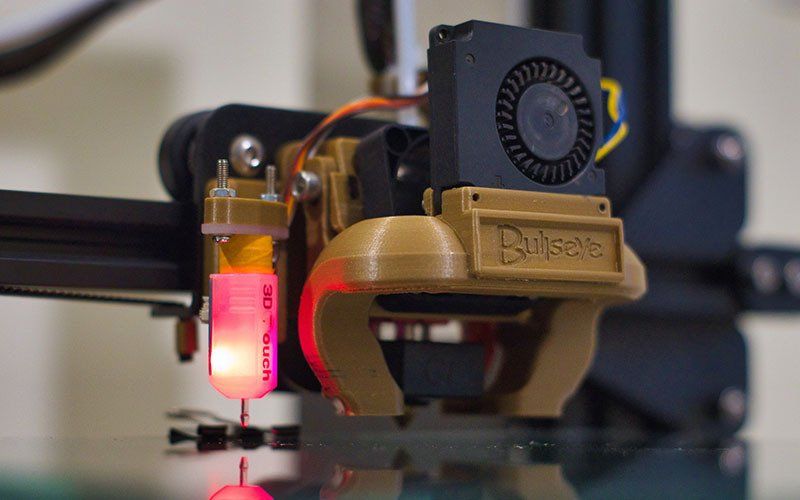
In-home 3D printing is now something everyone can partake in, whether you are an experienced industry professional or a child just getting started. These hobbyists can now create, build, and model many new and creative products in the comfort of their homes. They can now make toys, fix broken parts, invent products, and even build replacement parts or components for existing products.
The great thing is that now you can find these printers for well under $500.00. The article aims to help you find the best home 3D printers for your specific need.
3D Printer Terminology:
Before purchasing your home 3D printer, you must understand some basic terminologies.
Masked Stereolithography (MSLA): Uses an ultra-violet cured resin material lifted from a vat of liquid, layer by layer, which is a highly fragile process. Often referred to as resin MSLA.
Fused Deposition Modeling (FDM): Use a reel that is full of plastic filament that is extruded out of the hot nozzle in layers, which will then cool to form a solid model. Often referred to as filament FDM.
We recommend that beginners purchase an FDM printer, while those with prior experience with 3D printing could use the more advanced MSLA printer.
Shopping For The Best Home 3D Printers:
The Best Home 3D Printers To Buy Under $500.00.
Below we will describe our top picks for the best home 3D printers and why:
Best 3D Printer For Starters
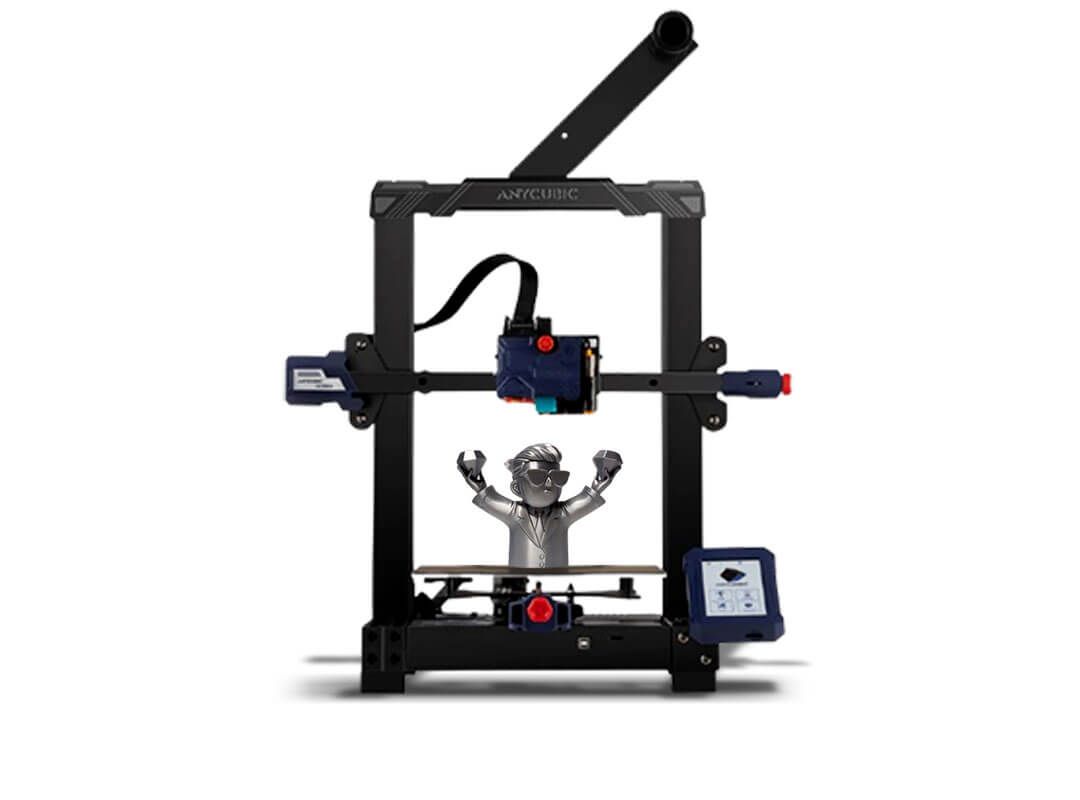
Anycubic Kobra
$299.00
Anycubic Kobra Specifications:
Printer Technology: FDM
Bed Leveling: 25-Point Automatic Leveling
Printing Material: PLA / ABS / PETG / TPU
Print Size: 220 x 220 x 250 mm (DWH)
Printing Speed: 80mm/s
Filament Detection: Optional
Printing Platform: One-Sided PEI-Coated Metal Steel
Connectivity: SD Card, USB
Interface: 4.3" LCD Touch Screen
Reasons to buy the Anycubic Kobra.
PROS
- Automatic bed leveling
- Direct drive
- Great prints
- Simple to assemble
- 4.9 customer rating
- Big touch screen
- 10-minute setup
CONS
- Hard to maintain tool head
- Hard to upgrade
If you are starting your 3D printing journey, then the Anycubic Kobra might be a great machine to learn first, with its easy-to-use touch screen functions and the excellent quality prints that it delivers.
This medium-sized, portable printer only weighs about 7kg, and its modular design allows makers to set up the machine in only 10 minutes. This machine also has a 4.3-inch LCD touch screen control and a bright display that is super intuitive.
They have self-developed a leveling function called Anycubic LeviQ that automatically adjusts when the heated printing bed notices any unevenness. This magnetic steel platform can withstand lots of printing and allows models to be easily removed, saving you lots on future maintenance costs.
Anycubic does provide various filament colors on its website, which gives makers lots of opportunities to be creative.
Best 3D Printer for Children
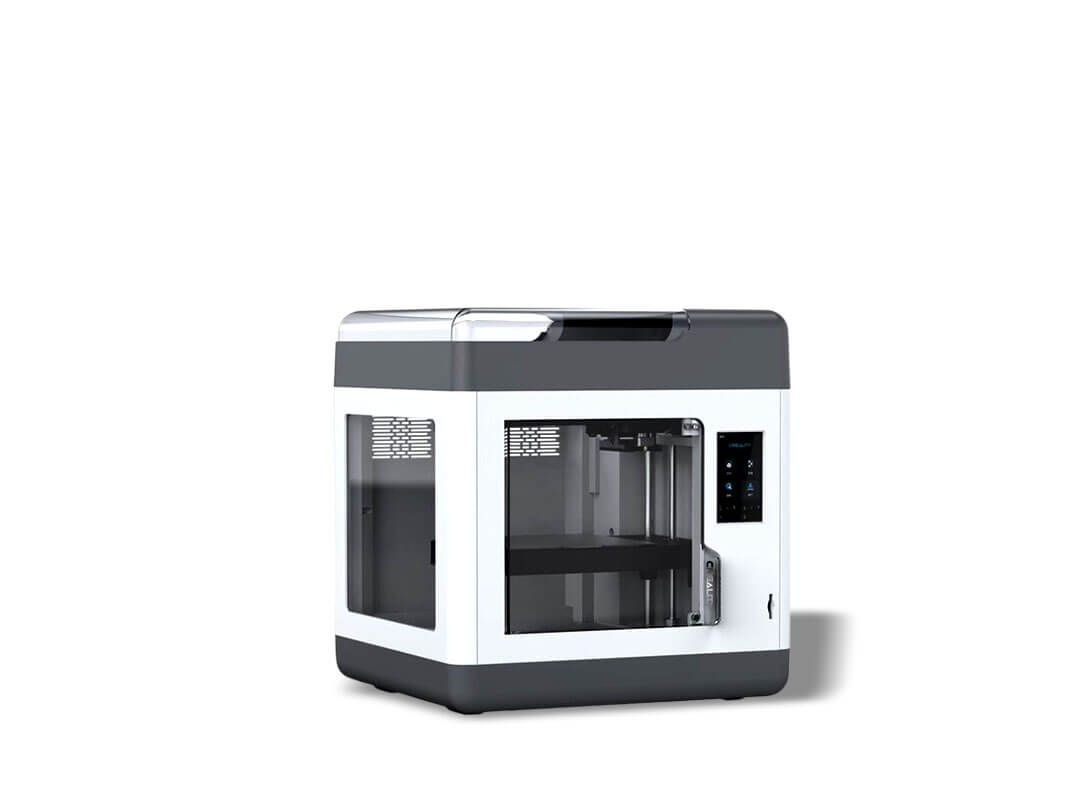
Creality Sermoon V1
$349.00
Creality Sermoon V1 Specifications:
Printer Technology: FDM
Bed Leveling: Zero-Leveling
Printing Material: PLA / ABS / PETG / TPU
Print Size: 175 x 175 x 165 mm (DWH)
Printing Speed: 50mm/s
Filament Detection: Yes
Printing Platform: PC Coated Steel Flex Sheet, Heated
Connectivity: SD Card, Wi-Fi
Interface: 4.3" Color Touch Screen
Reasons to buy the Creality Sermoon V1.
PROS
- Automatic pause when the door opens
- Ready to go, out of the box
- Viewing camera
- Big touch screen
- Child safety features
- Great app features
- Remotely move the model from the library, slice, print, and monitor
- Quite printing operations
CONS
- No auto leveling
- Must use Creality Cloud to print over Wi-Fi.
- App is chaotic
The Sermoon V1 printer is geared toward children, families, and schools. This printer has factory leveling and free assembly, which makes it ready to go out of the box. It has average print size capabilities, a heated printing bed, and a built-in camera.
This plug-and-play machine has many features aimed at keeping its younger makers safe while delivering excellent results with its easy-to-use interface. The fully enclosed Sermoon V1 will protect children from moving parts, as it resembles a kitchen toaster more than a 3D printer. The door has a sensor that will stop the printing process if opened before completion.
Another great feature of this printer is the super silent printing operation. Because of the enclosed case, the noise levels only reach 45dB, which is quieter than other manufacturers.
One of the only complaints about the system is the app software required to use this printer. The Creality Cloud app does offer free access to its massive library of models, but they need to notify makers if the models are for FDM or resin printers. The app will also bombard the makers with many notifications so that you may get distracted from useful and none valuable messages.
Quickest 3D Printer
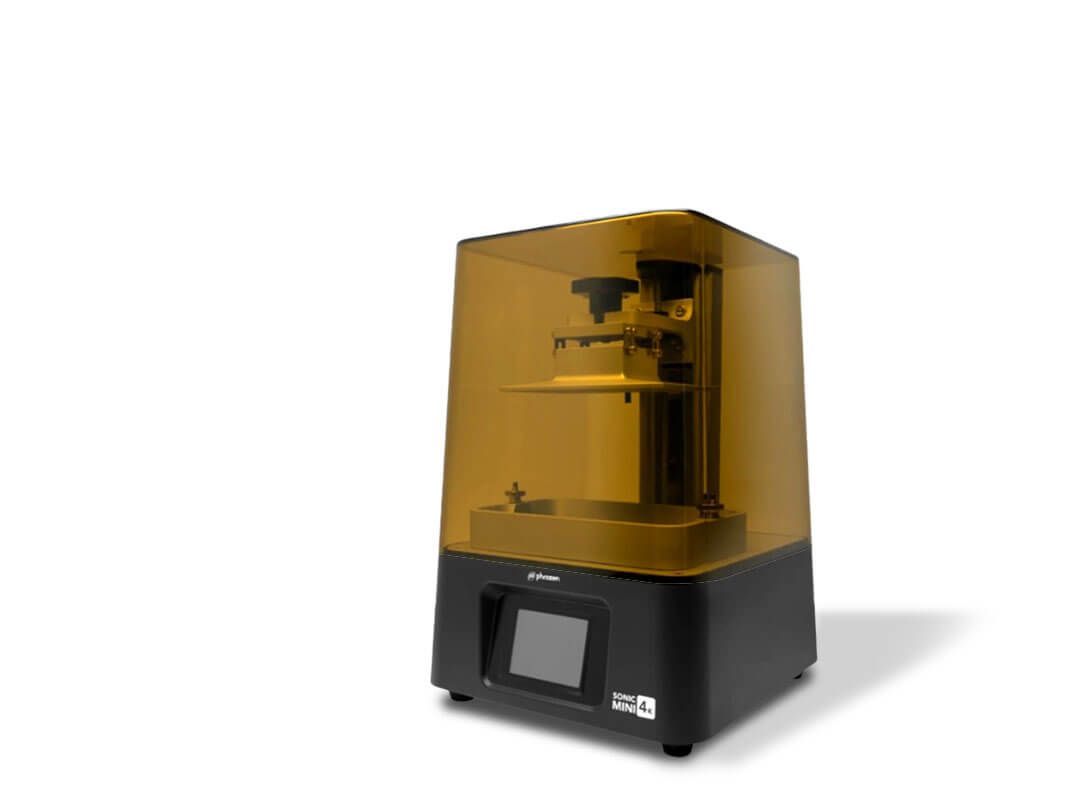
Phrozen Sonic Mini 4K
$399.00
Phrozen Sonic Mini 4K Specifications:
Printer Technology: MSLA
Bed Leveling: Manual Leveling
Printing Material: Multi Resin Compatibility
Print Size: 134 x 75 x 130 mm (DWH)
Printing Speed: 80mm/s
Filament Detection: N/A
Printing Platform: Laser Etched
Connectivity: USB
Interface: 2.8" Touch Panel
Reasons to buy the Phrozen Sonic Mini 4K.
PROS
- Lightweight, only 5kg
- Monochrome LCD screen
- High-printing resolution
- Ready to go out of the box
- Compact machine
- One of the fastest printers listed
CONS
- Printing platform challenging to clean
- Small touchpad
- System requires calibration
The Sonic Mini 4K is a superb beginner printer for makers just learning the process. This resin printer has 4K resolution capabilities at 35µm with 722 PPI, with a large 6.1-inch monochrome LCD screen. This machine comes fully assembled but requires some calibration before starting.
Depending on the job, the Sonic Mini 4K resin printers can be used for personal and professional use. The equipment can use multiple types of resin to make great-looking products. The easy-to-use USB functions make the equipment very user-friendly.
Best Value 3D Printer
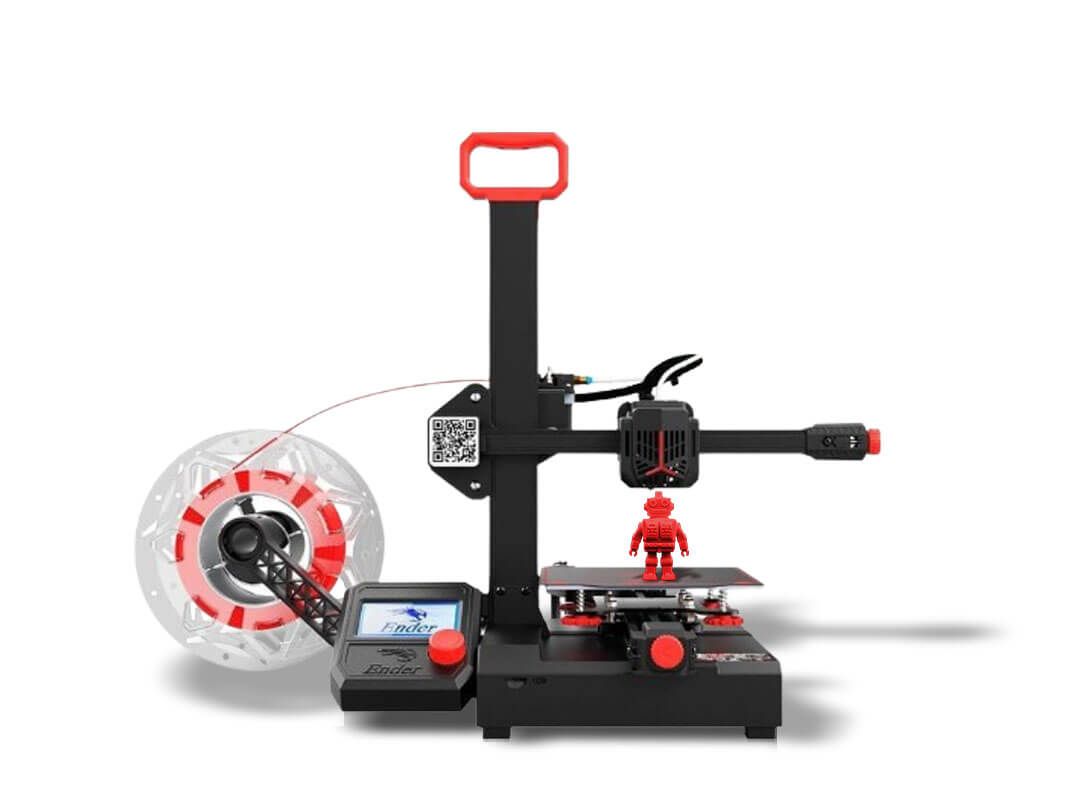
Creality Ender 2 Pro
$169.00
Creality Ender 2 Pro Specifications:
Printer Technology: FDM
Bed Leveling: Manual Leveling
Printing Material: PLA / TPU / WOOD
Print Size: 165 x 165 x 180 mm (DWH)
Printing Speed: 60mm/s
Filament Detection: No
Printing Platform: Textured Magnet On A Heated Bed
Connectivity: Micro SD, Micro USB
Interface: Clip-on LED Screen With Control Knob
Reasons to buy the Creality Ender 2 Pro.
PROS
- Price
- Quite stepper drives
- Quite cooling fans
- Tool drawer
- 5-minute assembly
- Lightweight and easy to move using the grab handle
CONS
- No assisted leveling
- Limited number of printing materials
- No filament detection
The Ender 2 Pro is great for makers who want to avoid breaking the bank to buy their first 3D printer. You can find this machine for well under its $169.00 price tag. The Ender 2 Pro is not just a lightweight (4.65kg) cheap flimsy kid’s toy but has similar components as the more expensive Ender 3 series printers. You can quickly move this printer around your home with its awesomely designed grab handle.
Refrain from letting the price tag fool you; this budget 3D printer can perform like higher-end printers. If you don’t believe us, check out their reviews on Google, which average this printer a 4.5-star rating.
This budget 3D printer comes with a grab handle because the company knows you will constantly be moving and storing this printer. 90% of this printer comes pre-installed; makers only need seven screws to complete the assembly. The machine is equipped with a toolbox that you can use for storage that you can use for screws, parts, or tools.
This printer has three outstanding features, including a resume printing function that will enable a full recovery after power is lost. The machine will continue printing from where it stopped. Second, the device has some quiet cooling fans and silent stepper drivers working in an office setting. Finally, the flexible textured print bed will hold the model firmly when printing and allows the model to peel off when it completes printing efficiently.
Best 3D Printer For Large Format FDM
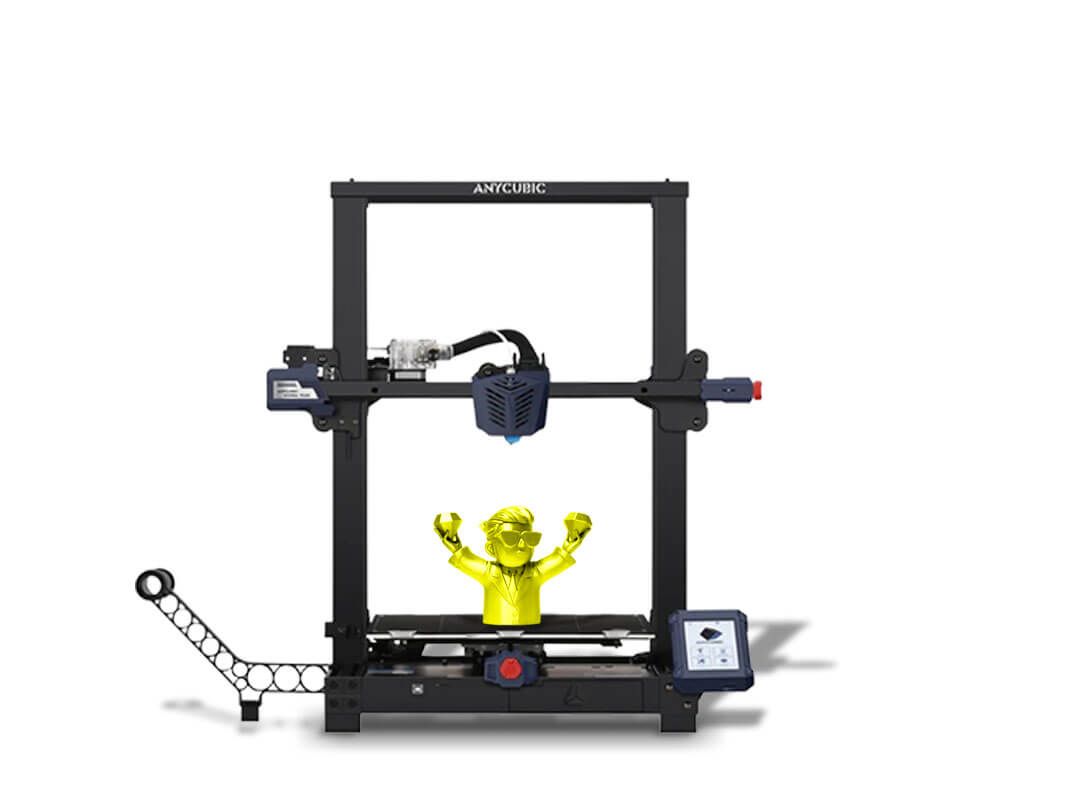
Anycubic Kobra Plus
$499.00
Anycubic Kobra Plus Specifications:
Printer Technology: FDM
Bed Leveling: 25-Point Automatic Leveling
Printing Material: PLA / ABS / PETG / TPU
Print Size: 300 x 300 x 350 mm (DWH)
Printing Speed: 100mm/s
Filament Detection: Yes
Printing Platform: Carborundum Glass
Connectivity: Micro SD, Micro USB
Interface: 4.3" LCD Touch Screen
Reasons to buy the Anycubic Kobra Plus.
PROS
- Large platform
- Automatic bed leveling feature
- Smart printing
- 10-minute setup
- Tool drawer
- After cooling, the bed easily releases parts
- Massive LCD touch screen
- Great bed adhesion
CONS
- High price
- Must manually create a profile in Cura
The Kobra Plus has the most significant build volume of any other printer on our list. Luckily this machine comes standard with a LeviQ 25-point precise automated leveling system for its massive 300mm x 300mm x 350mm print size.
This printer’s base is so extensive that it should be perfect for all your printing needs. With this colossal printing bed, the double-thread Z-axis can handle speeds up to 100mm/s. Its dual 6,000RPM fans cool the model quickly, and the 45w high-powered metal heating allows for fast filament melt out of the extruder.
The print bed is made from carborundum glass that locks during the hot printing process but will quickly release parts once they have cooled off. Makers may need a slight amount of persuasion from a scraper after release.
The user-friendly touch screen has a tremendous big 4.3” LCD to help better the user experience of the machine. This user experience was also considered when they thought about the broken filament or if you ran out. This machine’s intelligent printing features allow makers to easily continue printing after a pause or power failure.
For how easy it is to set up and get started and for its size capabilities, the Kobra Plus is an excellent addition to any at home workshop.
Best 3D Printer For Large Format Resin
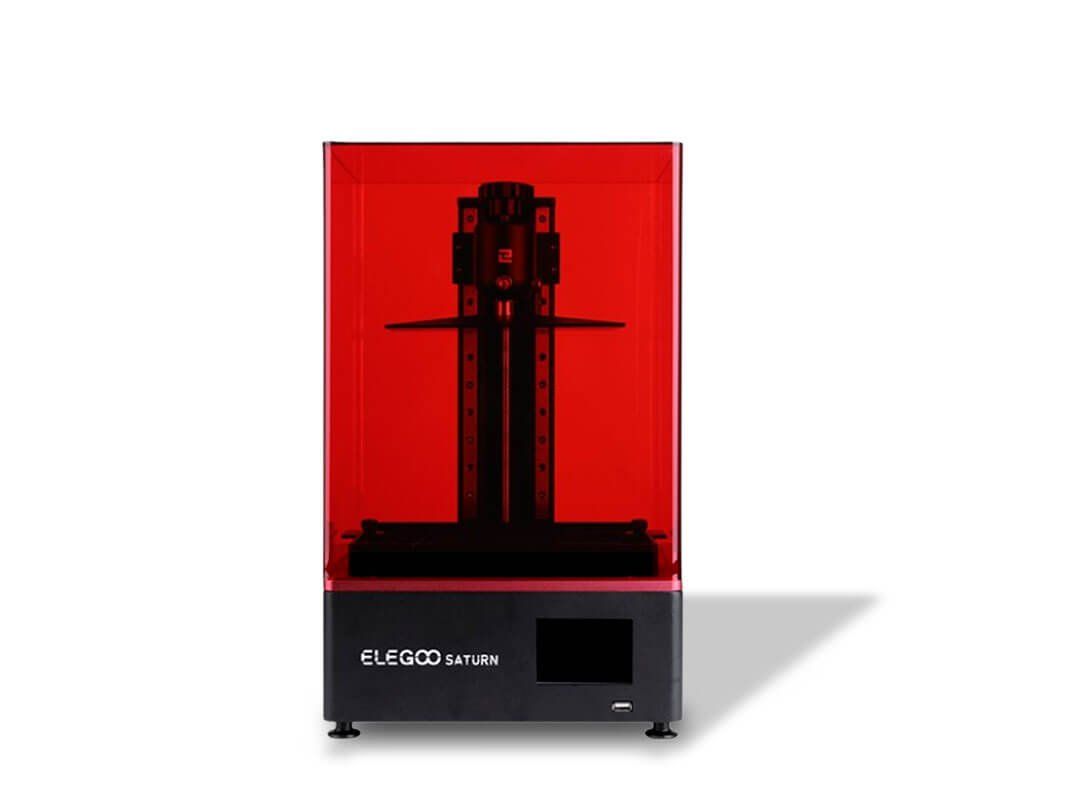
Elegoo Saturn
$490.00
Elegoo Saturn Specifications:
Printer Technology: MSLA
Bed Leveling: Manual Leveling
Printing Material: Multi Resin Compatibility
Print Size: 192 x 120 x 200 mm (DWH)
Printing Speed: 2-3sec/layer
Filament Detection: N/A
Printing Platform: Sandblasted Surface
Connectivity: USB, Ethernet
Interface: -
Reasons to buy the Elegoo Saturn.
PROS
- Large print size
- Double z-axis linear railway
- Ball-bearing leveling joints
- Chitubox slicer
- Two-bolt leveling process
CONS
- Shipping to the USA
- Product availability
This resin printer comes with an 8.9-inch 4k mono display for the large-sized print volume it can handle. The XY axis resolution is 50µm with 508 PPI, which ensures smooth surfaces. The Saturn can print about 2-3 seconds per layer at lower energy levels, reducing heat emissions and extending the LCD's lifecycle by 300%.
Saturn has excellent UV light protection. It offers a UV LED matrix, one of its most essential components on Saturn, giving it reliability and precision printing. This resin 3D printer has 54 LED lights that work hand-in-hand with the lenses. Saturn’s lights also help with energy savings because the LED light sources have low heat dissipation.
The double-Z-axis linear railway has sock absorption on the bottoms of the machine to give a quieter and more accurate motion. This resin 3D printer is equipped with ball bearings for leveling and is very easy to use for long-lasting performance. It also comes with two hand grips for traditional dismounting and legs to guard the FEP film against scratches.
We like the Chitubox slicer and its user-friendly interface, as Saturn is an excellent piece of equipment for someone just getting into 3D modeling or expert makers. The only downside of this resin printer is that it is difficult to find the product and have it shipped to the United States.
Best Home 3D Printer
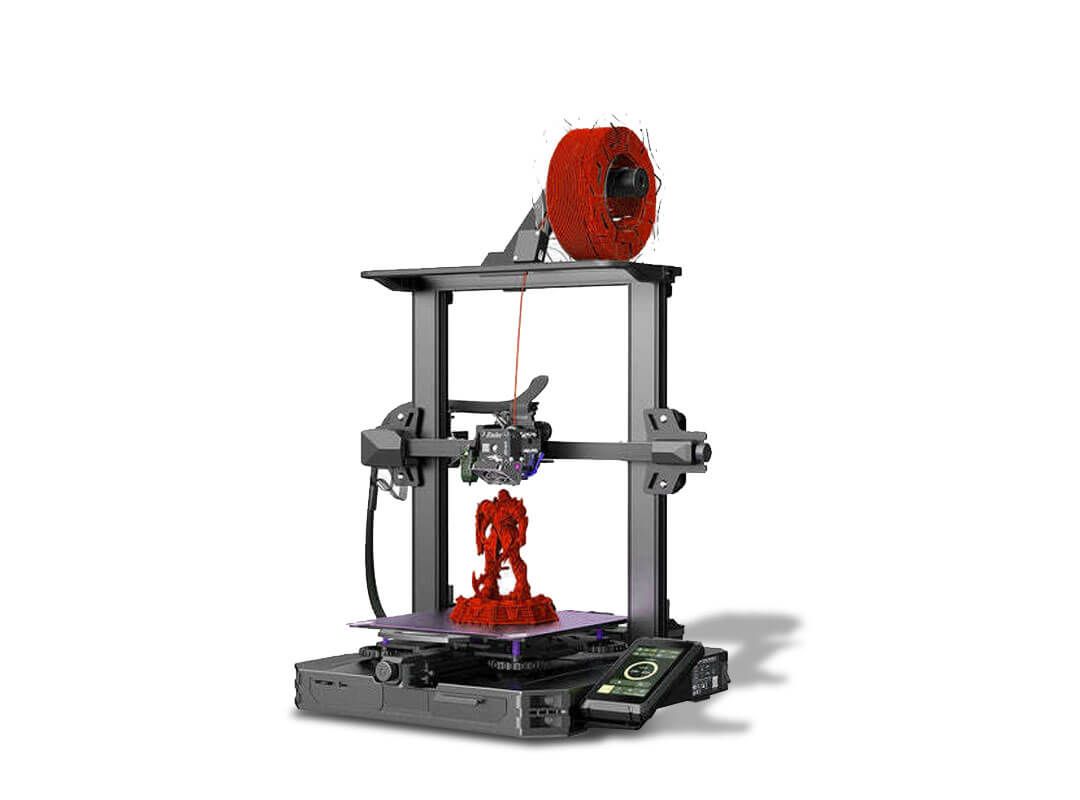
Creality Ender 3 S1 Pro
$479.00
Creality Ender 3 S1 Pro Specifications:
Printer Technology: FDM
Bed Leveling: CR Touch
Printing Material: ABS / PETG / PA / PLA / TPU / WOOD
Print Size: 220 x 220 x 270 mm (DWH)
Printing Speed: 80mm/s
Filament Detection: Yes
Printing Platform: PEI Spring Magnetic Steel
Connectivity: SD Card, USB-C
Interface: 4.3" LCD Color Touch Screen
Reasons to buy the Creality Ender 3 S1 Pro.
PROS
- Automatic bed leveling
- Customer Reviews - 4.8 star
- 6-step assembly
- Excellent print quality
- Vast options for 3D printing material
- Dual gear extruder
- 9 different languages programmable
- Storage drawer
CONS
- Heavy (11.1 kg)
- Average user interface
The Ender 3 S1 Pro is another big hit from the Ender-Series from Creality. This machine comes to the maker’s 96% pre-installed with only a 6-step assembly process required. This is one of the more expensive DIY 3D printers on our list, but this bad boy comes fully loaded and ready to go out of the box.
The 300°C high-temperature all-metal printing tip supports PLA filament and many other filaments. The “sprite” full-metal dual-gear direct hotend extruder will ensure a smooth feeding process for all of the filaments used in the machine.
Leveling is no longer an issue with the automated bed leveling system powered by the CR Touch probe, which quickly adjusts for assured build plate accuracy. This was the best feature leveling feature of all systems listed in this article.
The printing platform is a durable PEI spring steel plate with outstanding adhesion and requires makers to bend it to remove parts. The build plate has a magnetic sticker, making it easy to remove and clean up.
You can do remote printing and monitoring using the box assistant in the Creality Cloud App. The LED light provides excellent fill-in light, so makers can always see where they are with the model.
For those more experienced makers, the Ender 3 S1 Pro has an optional laser engraver module for makers who want to unlock their creative potential.
This printer took home our best 3D printer overall. Many things caught our eye, like the smooth feeding output from the dual-gear direct extruder on all the different filaments we tested. The prints had very fine lines without stringing with all the filaments tested. The CR Touch build plate leveling is an excellent addition to the machine and one of the best we have ever used. We liked the fantastic output from this high-temperature tip.
LEARN MORE ABOUT AT HOME 3D PRINTING
Examples of 3D printing:
There are many different uses for 3D printing, and as the technology expands, more diverse industries will start using this additive process with their products and applications.
Click on a few of these links to see examples:
Stay Informed
Subscribe to our newsletter and get the latest automation news, trends, and topics in the industry.


